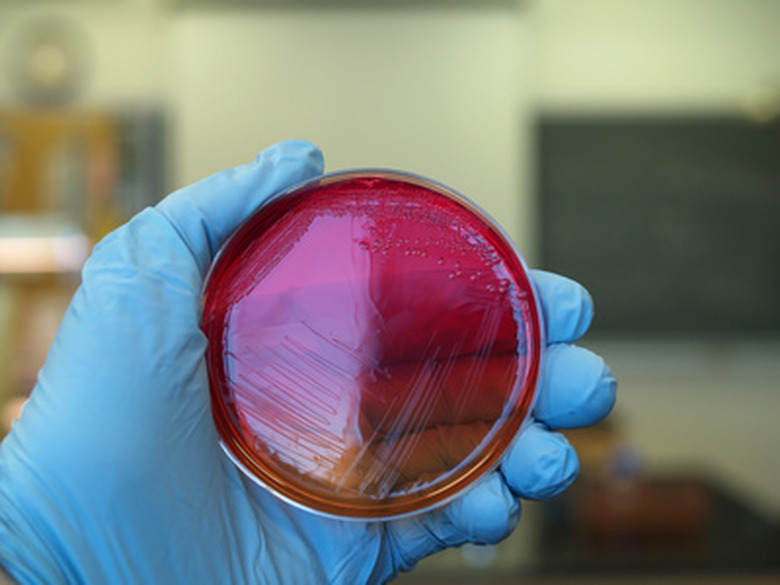How To Make A Bacterial Flowchart
Bacterial flowcharts provide a visual aid to quick identification of bacterial species. To create a flowchart, identify the common characteristics of the different groups of bacteria first to exclude non-relevant groups, and to more efficiently determine the bacteria present. A variety of software have the geometric elements needed to deal with one group at a time, by Gram stain and shape. A common species of skin bacteria, Staphylococcus aureus, offers an excellent place to start, with each step in the flowchart set in a geometric shape such as a rectangle, oval, square or box with lines connecting each subsequent step beneath for portrait-aligned flowcharts and horizontally for landscape oriented charts.
Step 1
Specify the culture to be tested is a pure culture. Also identify the origin of the sample to narrow the range of the flowchart.
Step 2
Write or type "Gram Stain" as the primary test and create two offshoots from this box. Mark the offshoots "Gram Positive" and "Gram Negative." Gram-positive stains, such as Staphylococcus, appear purple and Gram-negative stains, such as E. coli look red. Bacteria are split into these two groupings and Gram staining is the first test performed on an unknown sample, as it is a simple and inexpensive procedure that allows a large percentage of possibilities to be discarded.
Step 3
Enter the next options in a box or other shape on the flowchart, which identifies the shape of the bacteria obtained from microscopic analysis of the Gram stain. Types of shapes are rods, cocci, spheres or ovoids, spirillia, spiral twisted rods, spirochetes, very thin long spiral twisted rods, with buds and appendages and filamentous, threadlike parts. Rods and cocci are most common. Staphylococcus identifies as coccus.
Step 4
Split the following steps, boxes or other forms of choice, into biochemical tests for each branch of the flowchart. These differ for the various shapes of the Gram groupings. The primary test for Gram-positive cocci is the catalase test using hydrogen peroxide, and the resultant options are either catalase positive or catalase negative. For example, Micrococcus and Staphylococcus species test positive and Streptococcus tests negative. Examples of other steps for groups outside of the non-cocci, non-Gram positives include lactose fermentation or non-fermentation for Gram negative rods.
Step 5
Analyze the fermentation properties of the bacteria in the next element of the flowchart. The bacteria either ferments or oxidizes. Staphylococcus aureus is fermentative as opposed to Micrococcus, which is oxidative.
Fermentation analysis is a common step for both Gram-positive and Gram-negative bacteria identification.
Step 6
Add another line and shape to the flowchart. This step represents a test for coagulation, a biochemical test called coagulase. Staphylococcus aureus produces the coagulase enzyme, and when tested with a suitable medium, results in a jelly-like clot. All other staphylococci test as coagulase negative.
Alternate steps for other groupings of bacteria include oxidase testing for Gram-negative rods, or fast or slow lactose fermentation.
Things Needed
- Pen and paper
- Computer
- Flowchart software
Cite This Article
MLA
O'Keeffe, Jillian. "How To Make A Bacterial Flowchart" sciencing.com, https://www.sciencing.com/make-bacterial-flowchart-7570724/. 9 March 2018.
APA
O'Keeffe, Jillian. (2018, March 9). How To Make A Bacterial Flowchart. sciencing.com. Retrieved from https://www.sciencing.com/make-bacterial-flowchart-7570724/
Chicago
O'Keeffe, Jillian. How To Make A Bacterial Flowchart last modified March 24, 2022. https://www.sciencing.com/make-bacterial-flowchart-7570724/
